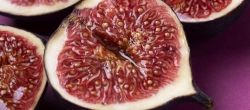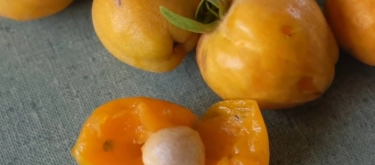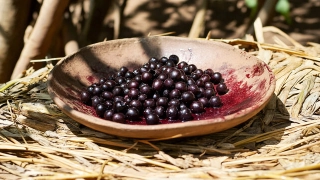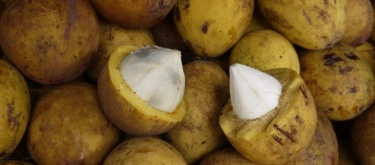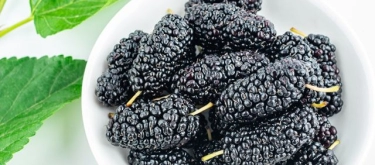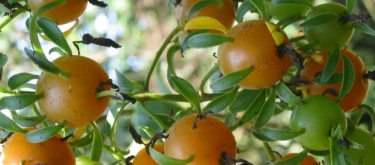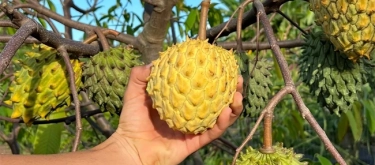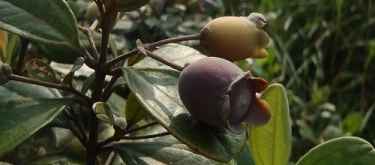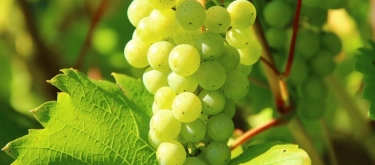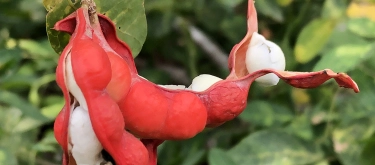Puruma: Taste Profile, Aroma, Benefits and Health Risks
Puruma (also known as Amazon Tree-Grape, Purui; Pourouma cecropiifolia) is a tropical fruit native to the Amazonian rainforests of Brazil, Peru, Ecuador, Colombia, and Bolivia. Closely related botanically to figs and mulberries (Moraceae family), Puruma has been traditionally valued by indigenous Amazonian communities for its pleasant taste, nutritional benefits, and medicinal properties. Its grape-like clusters and attractive flavor have recently gained attention as a promising tropical fruit in international markets.
Puruma fruit is generally safe for consumption; however, limited research is available regarding allergenic properties. Individuals allergic to figs or related Moraceae fruits should exercise caution. Due to insufficient data, pregnant and breastfeeding women should consume moderately.
What does Puruma taste like?
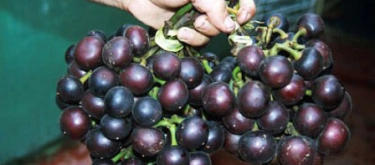
Complete Sensory Description:
Taste
Puruma fruits offer a mild yet delightful balance of sweetness and acidity, characterized by flavors reminiscent of fresh grapes, figs, and subtle notes of berries. The flavor finishes gently, leaving a faint floral sweetness on the palate.
Aroma
The aroma of Puruma is subtle and mildly fruity, featuring gentle fragrances similar to fresh grapes and figs, complemented by faint floral and earthy undertones.
Texture
The fruits possess a thin, tender skin surrounding soft, juicy pulp. The pulp has a delicate, gelatinous consistency reminiscent of ripe figs, enclosing tiny edible seeds that add a slightly grainy texture.
Appearance
Puruma fruits grow in grape-like clusters, each fruit approximately 1–3 cm in diameter. When ripe, their skin exhibits shades of deep purple, reddish-purple, or nearly black, with translucent, juicy pulp inside.
In-depth Flavor Analysis:
The nuanced taste profile of Puruma is derived from a complex interaction of natural sugars, organic acids, tannins, and aromatic compounds, creating its appealing yet subtle flavor:
-
Sweetness Profile: Sugars such as fructose and glucose dominate, imparting gentle sweetness with flavor notes similar to fresh grapes or ripe figs, creating a mild but satisfying sweetness.
-
Acidic and Astringent Components: A balanced combination of organic acids, primarily malic and citric acids, introduces refreshing tartness. Low levels of tannins provide mild astringency and complexity, particularly notable when fruits are less mature.
-
Aromatic Compounds: The subtle fragrance results primarily from esters (such as ethyl acetate), terpenes (such as geraniol and α-pinene), and aldehydes, lending delicate floral, fruity, and faintly herbal notes, enhancing overall sensory appeal.
-
Environmental Factors Influencing Flavor: Variations in soil composition, rainfall, and regional climate significantly influence sweetness, acidity, and aroma profiles, with fruits from wetter regions generally sweeter and more aromatic.
Varieties and Culinary Applications:
Puruma does not have well-established commercial varieties, though regional differences in size and sweetness exist. Its culinary versatility includes:
- Fresh Consumption: Commonly consumed fresh, directly from clusters, as a refreshing snack or dessert accompaniment.
- Juices and Beverages: Often pressed into fresh juices, beverages, smoothies, and traditional fermented drinks.
- Desserts: Puruma pulp is excellent in fruit salads, ice creams, sorbets, jellies, and puddings.
- Preserves: Frequently prepared as jams, syrups, sauces, and fruit preserves due to its appealing color and natural sweetness.
Selection and Storage:
Choose Puruma fruits that exhibit rich, uniform dark-purple or reddish-purple color and a slight yield to gentle pressure, signaling optimal ripeness. Avoid fruits with excessive softness, visible mold, or overly firm texture. Store fresh fruits refrigerated in ventilated containers, consuming within 3–5 days. To extend storage, freeze pulp or process fruits into preserves promptly after harvesting.
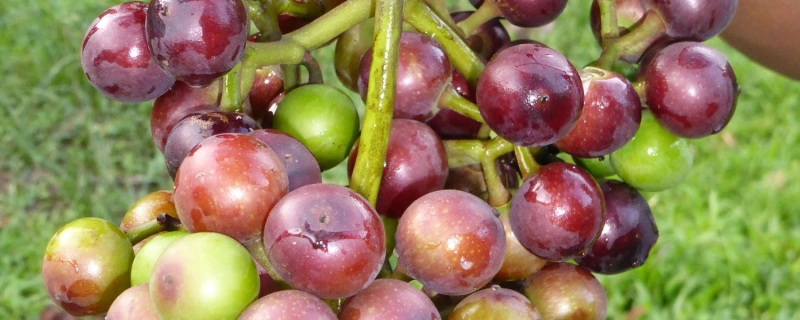
Nutritional Insights:
Puruma fruits are nutritionally valuable, providing dietary fiber, vitamin C, vitamin A precursors (such as beta-carotene), potassium, calcium, and antioxidants including flavonoids and anthocyanins. Regular consumption may address common nutritional issues, such as improving digestive health and reducing constipation through its fiber content. Additionally, its high antioxidant content may support cardiovascular health, improve immune response, and offer protective effects against chronic inflammation and oxidative stress.
Expert Insights & Culinary Tips:
- Flavor Pairings: The subtle sweetness and mild acidity of Puruma pair ideally with stronger-flavored tropical fruits such as passionfruit or citrus, enhancing beverages and desserts.
- Preparation Recommendations: Gentle heating or maceration with sugar or honey enhances flavor complexity, particularly in jams, syrups, or dessert sauces. Combining Puruma pulp with yogurt or ice cream creates appealing textures and balanced flavors.
- Seed Management: Edible seeds provide texture but can be removed through straining if smoother preparations are desired.
Interesting and Curious Facts:
- Traditionally, indigenous Amazonian tribes have utilized Puruma fruit both nutritionally and medicinally, often using extracts from the leaves or bark as treatments for digestive ailments and inflammation.
- The common name "Amazon Tree-Grape" comes from its visual resemblance to grapes, despite no botanical relation to actual grapevines.
- Puruma trees are ecologically significant within Amazonian ecosystems, providing important food sources for diverse wildlife, including birds and primates.
Harm and Dietary Considerations:
While generally safe, individuals allergic to figs or other Moraceae-family fruits should consume Puruma cautiously due to potential cross-reactivity. Limited safety data exist for pregnant and breastfeeding women, so moderate consumption is advised. Excessive intake might cause mild digestive discomfort due to its fiber and mild tannin content.
Religious Dietary Considerations:
Puruma fruits are universally permissible within all major religious dietary practices, including Halal, Kosher, Hindu vegetarianism, and Buddhist diets, without any known religious restrictions or associations.
Final Thoughts & Sensory Journey:
Puruma offers a delicate yet rewarding sensory experience, combining gentle sweetness, refreshing mild acidity, and subtle fruity-floral aromas. With notable nutritional benefits, culinary versatility, and a rich cultural history, Puruma is a fascinating fruit worth exploring for those seeking authentic Amazonian tastes.
Resources:
- "Edible Medicinal and Non-Medicinal Plants, Volume 4: Fruits" by T.K. Lim (Springer, 2012)
- "Amazonian Fruits: Their Nutritional Value and Potential Health Benefits" edited by Rosa E. Tundis et al. (CRC Press, 2019)
- "Underexploited Tropical Fruits and Nuts" edited by P.K. Nair (Cambridge University Press, 2011)
